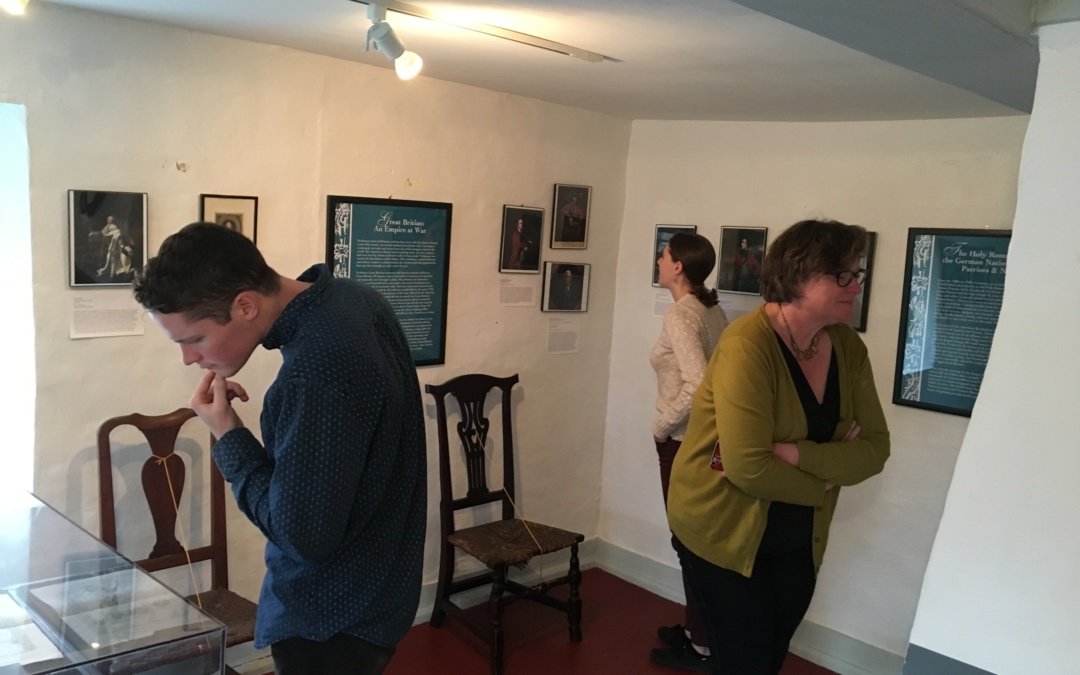At any given member institution on the New Hampshire Heritage Museum Trail, visitors are apt to encounter exhibits that touch on art, war, and themes that touch on the urban landscape, agriculture and more.
According to Mike Culver, president of The Trail and executive director of the Wright Museum in Wolfeboro, an exhibit is much more than “a static display of historical artifacts.”

“Our first consideration is always the purpose of the exhibition,” he said. “Since education is the primary objective for any museum, our first consideration should always be: ‘How is what we are creating impacting and enhancing our educational mission?’”
Upon answering this question, he said what follows are the content and then aesthetics of an exhibit, each of which are “profoundly interwoven.”
At the American Independence Museum in Exeter, Executive Director Emma Bray said they are currently in the “unique and exciting position” to reinterpret all their permanent exhibition spaces.
“We are thoughtfully considering what story we want to tell and what the visitor takes away from their experience,” she said. “Perhaps it’s a new piece of information, or a spark to learn more about a topic.”
Noting there is a wealth of research on museum visitation about how different types of learners engage with museums, Bray said they are trying to provide as many opportunities for engagement as possible. This engagement is encouraged, she said, through traditional labels, digital interactives, and physical interactives.
“The interactives are still a work in progress, but we’re in an exciting phase of development and exploration,” she added.
For Culver, who noted they are also currently incorporating interactives into their exhibit spaces, it is important to “grab a visitor’s attention” almost immediately.
“This can be done in various ways – colors, images, sounds, but usually there is a combination of all of these elements,” he explained. “People learn in different ways–some by sight, some by text, some by the spoken word.”
Once they are drawn to the exhibit, he said visitors “unconsciously choose how they best learn and what they will ignore.”
“‘Bell and whistles’ may get them there, but it is the content they choose to absorb that will go home with them,” he said.
At the American Independence Museum, Bray said their hope is that their exhibits inspire visitors to learn more about the nation’s struggle for independence and its relevance to today.
“Civic engagement is another important outcome we hope to achieve,” she added.
Noting Wright Museum’s mission is to also demonstrate the relevance of a particular part of history–in their case, WWII–Culver said a well-designed exhibit results from “countless hours of study and planning.”
“You have to make sure the content is ‘king’ and worthy of visitors’ attention,” he said. “The exhibit must move them intellectually, emotionally, and creatively, so that they leave your museum wanting to know more and feel destined to explore topics on their own.”
Bray agreed and added, “Designing an exhibit is a wonderful challenge–and it is worth the effort when you see people experience those ‘aha’ moments.”
In total, 17 museums make up the NH Heritage Museum Trail, which is broken down into three branches: Seacoast, Merrimack Valley and Lake Region. Stops on The Trail include Canterbury, Concord, Dover, Exeter, Laconia, Manchester, Moultonborough, Plymouth, Tamworth, and Wolfeboro.

